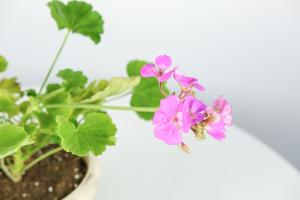Can a Single Tomato Plant Produce Fruit?
Tomatoes are a popular crop for backyard gardeners and commercial farmers alike, and for good reason. They are easy to grow, produce delicious fruit, and offer a range of nutritional benefits. However, many people wonder whether a single tomato plant can produce enough fruit to make it worth the effort. The answer is yes, a single tomato plant can produce fruit – and quite a lot of it.
The Basics of Tomato Plant Production
Tomato plants produce fruit via pollination. The flowers of the tomato plant are pollinated by bees, butterflies, and other insects, which transfer pollen from the male part of the flower to the female part. Once pollinated, the tomato plant begins to produce fruit.
The amount of fruit a single tomato plant can produce depends on a variety of factors, including the variety of tomato, the size of the plant, the growing conditions, and the quality of care it receives. In general, determinate tomato varieties produce a set amount of fruit before the plant stops growing, while indeterminate varieties continue to produce fruit throughout the growing season.
Maximizing Yield
While a single tomato plant can produce fruit, there are several steps you can take to maximize your yield. These include:
Choosing the right variety: Some varieties of tomato are known for producing high yields, while others are more suited for flavor or disease resistance. Consider your goals when selecting a variety of tomato to grow.
Providing proper nutrition: Tomato plants need a balance of nutrients, including nitrogen, phosphorus, and potassium, to grow healthy and produce fruit. Use a high-quality fertilizer to give your plant the nutrients it needs.
Watering consistently: Tomatoes need consistent moisture to produce fruit. Water your plant deeply once a week, or more often in hot or dry weather.
Pruning and trellising: Removing suckers from your tomato plant and training it to grow on a trellis or stake can increase air circulation and sunlight exposure, which can lead to larger and more abundant fruit.
Harvesting and Care
When your tomato plant begins producing fruit, it is important to harvest it regularly to encourage the plant to continue producing. Tomatoes should be picked when they are fully ripe, but not overripe, to ensure the best flavor and nutrition.
You should also take care to remove any diseased or damaged fruit, as well as any dead or yellowing leaves, to prevent the spread of disease and pests. Regularly inspecting your tomato plant for signs of problems, such as wilting or discoloration, can help you catch issues early and take action before they become more severe.
Conclusion
In short, a single tomato plant can produce fruit – and with proper care and attention, it can produce quite a lot of it. Whether you are growing tomatoes for personal consumption or for sale, taking steps to maximize your yield and care for your plant can help ensure a bountiful harvest for many months to come.

 how many times do yo...
how many times do yo... how many planted tre...
how many planted tre... how many pine trees ...
how many pine trees ... how many pecan trees...
how many pecan trees... how many plants comp...
how many plants comp... how many plants can ...
how many plants can ... how many plants and ...
how many plants and ... how many pepper plan...
how many pepper plan...
































